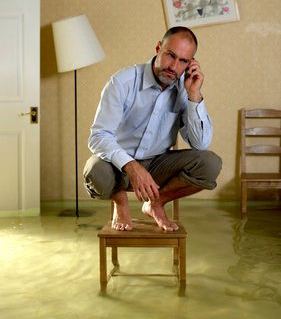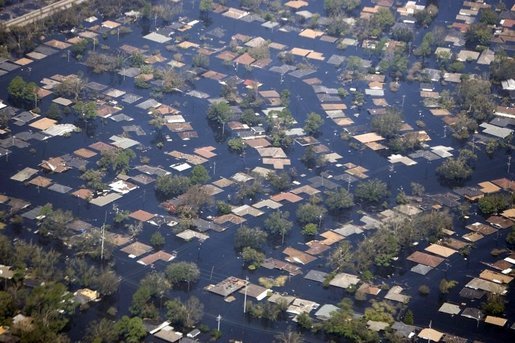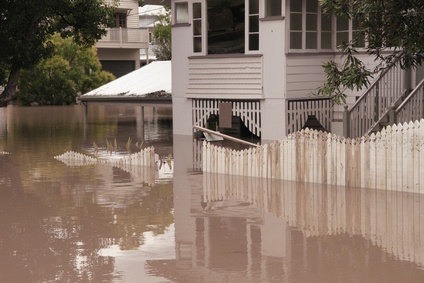What to Do If Your House Floods
Torrential thunderstorms, overflowing riverbanks, and Category 2 hurricanes all possess the incredible power to unleash massive amounts of floodwaters into homes. Natural disasters are not the only cause of house floods. Burst plumbing pipes, faulty appliances, and foundation leaks are also responsible for devastating home floodingFlooding is the overflow or accumulation of water in areas t... More.
When your house floods, here’s what to do:
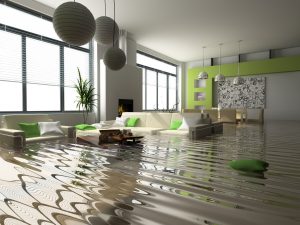
Be sure to take these steps immediately after finding the excess water to limit the damage.
- Re-enter with caution
- Document the damage
- Contact your insurance company
- Evaluate affected items
- Pump out floodwaters
- Manage moldMold is a type of fungus that grows in damp or humid conditi... More
- Protect the property
- Be alert to fraud
The most pervasive natural catastrophe on US soil is floodingFlooding is the overflow or accumulation of water in areas t... More. No matter in what region or state your home resides, floodingFlooding is the overflow or accumulation of water in areas t... More is a possibility. Certain properties may be at a greater danger of floodingFlooding is the overflow or accumulation of water in areas t... More when these homes are situated in established, high-risk flood zones.
A flooded home must be dealt with appropriately in order to recoup costs associated with repairs or replacement and to keep all members of the household physically safe.
1. Re-enter with Caution
Take extra precautions when stepping foot inside your home after floodwaters subside. The surge of floodwater can cause holes in the floors, warped walls and a cracked foundation. Visually inspect the home prior to entering.
Be alert to lingering odors of gas. The home’s electricity should also be shut off before you step inside. Water and electricity are a lethal combination. As a safety measure, enlist the services of a licensed electrician to inspect the home before walking in.
2. Document the Damage
As a homeowner, you’re likely to be motivated to start repairs as quickly as possible. Hold off on the impulse and instead take ample photographs and digital videos of the damage caused by the flood. Your homeowner’s insuranceHomeowner’s insurance is a policy that provides financial ... More company requires proof of the flood damage in order to provide proper reimbursement. Insurance coverage could decrease if you start repairs before documenting the loss.
3. Contact Your Insurance Company
Flood insurance has a major impact on whether homeowners recover or become financially ruined. Homeowner’s insuranceHomeowner’s insurance is a policy that provides financial ... More rarely covers flood damage. Rather, as homeowners with properties located in flood zones know, flood insurance must be purchased separately through the National Flood Insurance Program. Call your insurance representative immediately after the flood. Work with your insurance adjuster to pinpoint the cause of the flood and any degree of coverage.
4. Evaluate Affected Items
Floodwaters are polluted with waterborne bacteria, sewageSewage is wastewater containing biological and chemical cont... More, and harmful pathogens—all of which can cause disease. As a result, food, medicine, and cosmetics that have come into contact or have even been in close proximity with floodwaters should be discarded.
Mattresses that have been soaked by floodwaters should also be tossed out. Floodwaters can contaminate toys and stuffed animals, which also should be thrown away.
All non-porous, hard-surfaced materials can be disinfected, especially those that are of high-sentimental or monetary value. A professional can conduct this service through contents restoration and pack outs.
Upholstered furniture should be cleaned by a professional. RestorationRestoration is the process of returning a property to its pr... More can be achieved with solid wood furniture that has not been severely impacted by the flood. Carpets contaminated with sewageSewage is wastewater containing biological and chemical cont... More should be immediately discarded.
Glass and plastic dinnerware should be disinfected by soaking them in a solutionA solution is a homogeneous mixture of two or more substance... More of one-part chlorine bleach and four parts hot water for ten minutes, then air-drying them. Silverware can darken if exposed to bleach, so immerse all utensils in boiling water for ten minutes for thorough sterilization.
5. Pump Out Floodwaters
Once your insurance representative has approved the cleanup, you can use a sump pumpA sump pump is a pump installed in a basement or crawlspace ... More to gradually remove the water. A wet vacuum and even buckets will also help remove excess water. Water is heavy, so use extra caution when lifting water.
Slowly remove the water in stages. Removing the floodwaters in haste is likely to cause the walls or floors to collapse. Wooden floors, too, should be dried gradually to prevent the wood from cracking or splitting.
Assist in the dryingDrying is the process of removing moisture from materials, s... More process of the home by encouraging substantial ventilationVentilation is the process of exchanging or circulating air ... More. Open doors and windows for optimum aeration. A professional flood cleanup service will be able to finish the job.
6. Manage Mold
Mold flourishes on moisture rich surfaces within 24 to 48 hours. SporesSpores are microscopic reproductive units of fungi or mold t... More can latch onto wet carpeting, bedding, rugs, and upholstered furniture. MoldMold is a type of fungus that grows in damp or humid conditi... More colonies can be controlled with a disinfecting solutionA solution is a homogeneous mixture of two or more substance... More applied to the surfaces. Ammonia and bleach should never be mixed, as the solutionA solution is a homogeneous mixture of two or more substance... More will produce lethal fumes.
7. Protect the Property
Floodwaters can shatter glass and damage the building’s structures. Homeowners should make every effort to prevent further damage to the home. Board up broken windows and doors to stop the elements, like rain, snow and wind, from causing more ruin. The process will also deter wild animals, snakes and even criminal intruders from entering your home.
8. Be Alert to Fraud
Fraudulent calls from imposters threaten flood victims with voided insurance policies if additional payments are not made. FEMA’s Director of the National Flood Insurance Program, Roy E. Wright, confirms that these calls are fraudulent and should not be given any consideration.
Those recouping from a flood are advised to only accept calls from FEMA representatives, local officials, insurance companies and the adjusters assigned to your property.
Emergency Water Damage Restoration
When floodwaters permeateTo permeate is to pass through or spread throughout a materi... More your home, you may seek professional help to return your property to its pre-damaged condition. RestorationMaster is a local water damage restoration company with the experience, equipment and dedication to restore your home when floodwaters strike.
Swift action is necessary when any amount of floodwater infiltrates your property. The numerous consequences of flood damage include discoloration of items, deterioration of structural components of the building and moldMold is a type of fungus that grows in damp or humid conditi... More growth, not to mention the impactful damage to heirlooms or antiques. Though the destruction to belongings can be severe, RestorationMaster’s skilled technicians will work with you to restore even sensitive items, like valuables and documents.
RestorationMaster
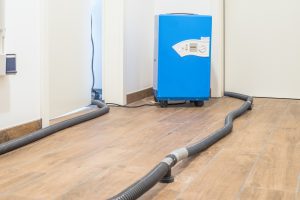
The equipment used by the professionals of RestorationMaster is powerful and will eliminate all moisture from the affected area.
The RestorationMaster water damage restorationWater damage restoration is the professional process of clea... More specialists will arrive onsite promptly to assess the flood damage. Advanced water extraction equipment is utilized to thoroughly dry the space. Powerful air movers and dehumidifiers remove all excess moisture. The team then works tirelessly to restore building materials and belongings affected by the floodwaters. Since waterborne bacteria is likely to be present from the intrusion of floodwaters, the RestorationMaster technicians sanitize and deodorize the home. Any risk of moldMold is a type of fungus that grows in damp or humid conditi... More is thwarted by the team’s mold and mildew removal services.
RestorationMaster reliably serves the Providence, Rhode Island community of residences and businesses. The team stands by 24 hours a day, 7 days a week to respond to emergency calls.










